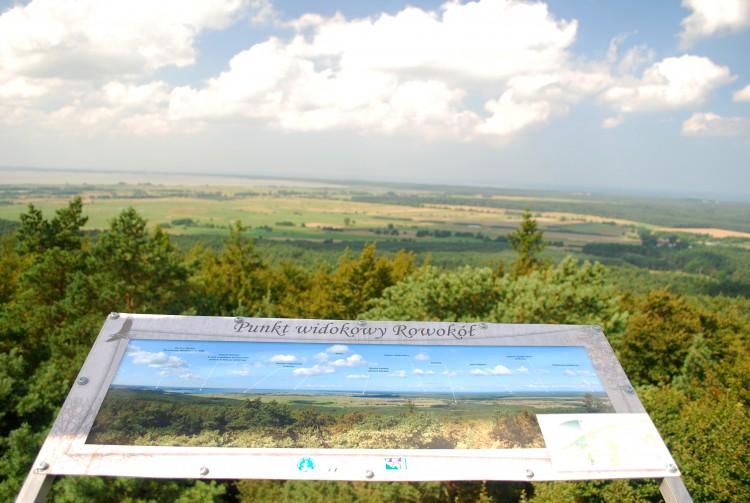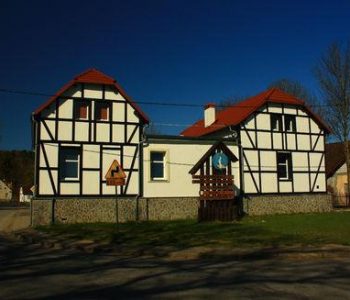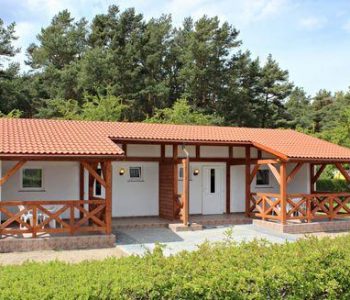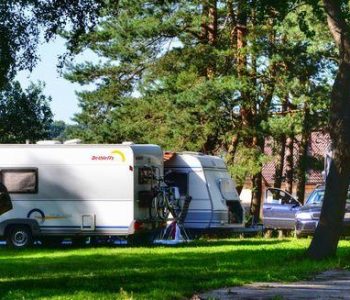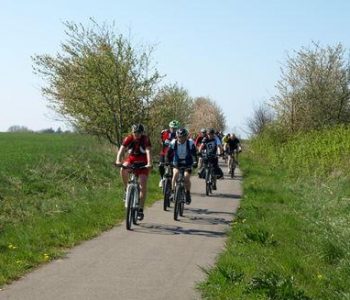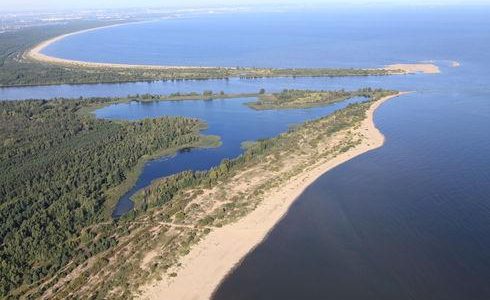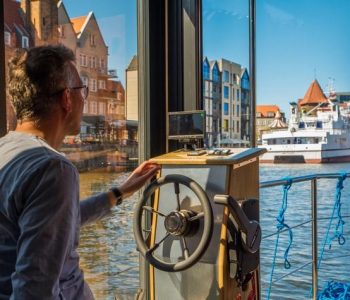Seen from a distance, it resembles a volcanic cone that rises high above the beautiful Kashubian landscape. When you reach its foot, it seems to evolve into an enormous, green mass covered densely with tall firs and ancient beeches. Rowokół, the holy hill of Slovinic people, is famous for two reasons: breath-taking wildlife and old legends that have for years fired the imagination of both inhabitants of nearby villages, as well as guests who come to visit, if only for a while.
Foothill wildlife
The misty and mysterious hillsides rise gently up to 115 metres above sea level. They are almost entirely covered by a forest, which is part of Rowokół nature reserve. It serves as a sort of showpiece for the nearby Słowiński National Park, which stretches along the wide coastal strip. The routes were designated along the slopes of the end moraine in a way that would enable, even during a quick stroll, to stumble upon signs of local wildlife. These include thick trunks carved by beavers, or paths created by wandering deer.
Hilltop history
First traces of human activity in the area of the hill can be traced to the 9th century, when Slovinic people praised the god of fire, Swarożyc. On the south-eastern slope of Rowokół Hill, archaeologists discovered remains of circular shafts together with an enormous fire-altar and animal bone remains. At the turn of the 13th century, the shrine of St. Nicolaus was built on top of the hill, which was then presented by Mestwin II, Duke of Pomerania, to monastic priests of Słupsk. After two hundred years, the small shrine was turned into St. Mary’s Sanctuary, which became one of three pilgrim stations. During the Reformation, the building was taken apart, and some of its stones were used in construction of the church in Smołdzino.
Rowokół is one of the highest hills in this part of Kashubia. It is clearly visible both from land and sea. This made it a perfect landmark for travellers and sailors. At night, bonfire lights would show the way. During the day, they were replaced by a column of smoke. At the end of the 19th century, this function was taken over by the Czołpino lighthouse. Currently, an observation tower with a breath-taking view in all directions crowns the top of the hill.
A pirate, a fiend, and a pin
Legends surrounding Rowokół are an intricate part of its history. Some of them tell stories of a treasure hidden deep within the hill by pirates, the Bandemers. They were told to set sail on their pillage raids from Rowy harbour. The way to the treasure is said to lead through a small valley below the hill top. However, it is said that it has been for centuries guarded by the devil himself. On Sunday mornings, during the mass, he is said to start his frolics, covering the entire hill in thick fog.
Another legend says that the hill used to be a shelter for a band of rouges, who would rob merchants, travellers, and use bonfires to mislead ships into shallows. Duke Ratibor, during whose time all this was taking place, and who himself had used to set out on pillage raids before, had for long turned a blind eye on all these exploits. However, when his treasury began to run dry, he decided to take from the robbers what he thought would serve him better: the looted valuables. Imprisoned and tortured, the chieftain wouldn’t reveal the location of the treasure. In his dying breath, he only mentioned that the treasure was buried under a large boulder, and the only way to retrieve it was to remove a pin from underneath it. He failed to mention, however, that the rock and the pin were meant to be a deadly trap, set for careless treasure hunters.
Make sure you visit
The area around Rowokół provides a perfect destination not only for one-day hikes, but also for longer escapades. Smołdzino, a small town located at the foot of the hill, is famous for its Church of Holy Trinity, erected in 1632, and a hydroelectric power plant located near the place where Łupawa river flows into Gardno lake. Before you start exploring, make sure you visit the Słowiński National Park Museum of Nature, which displays in detail the flora and fauna of this part of the coast.
The village of Kluki, located nearby, is proud of its Museum of Slovinic Countryside. Here, during numerous folklore festivities, old huts and barns again teem with life, reminding of their former inhabitants.
A trail into the sandy dunes, between Gardno and Łebsko lakes, is going to lead us to a hill, clearly visible above the coastal forest. On the top of the hill, stands the Czołpino lighthouse, which is open to the public. Being located almost in the heart of Słowiński National Park, it gives a breath-taking view of the landscape beneath it.
Painter’s inspiration
The Slovinic hill can be admired not only in person, during a visit to Pomorskie, but also upon visiting the Brücke Museum in Berlin. Rowokół became the theme of a 1937 painting by one of the top representatives of German impressionism. The painting is entitled: “Lebasee mit Revekol”.
